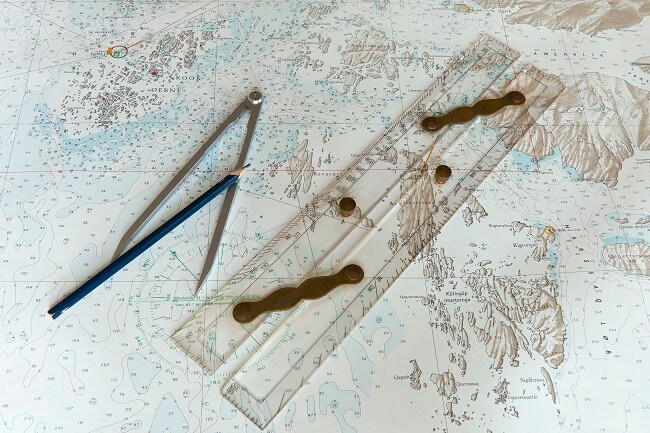

Nautical Almanac is a type of navigation aid, which describes the position of celestial bodies to assist navigators at sea to determine their ship’s position using celestial navigation.
The nautical almanac contains astronomical data for the entire year which assists the navigator in making astronomical calculations on ship. Reading the bullet points will be easier if one has the almanac open in front for easy reference.
A nautical almanac uses the time position as per the GMT (Greenwich Meridian Time) along with the position of the earth to calculate and predict the sea-routes. The position of the sun, the moon, the other planets and 57 main stars are also used along with the GMT and the earth’s position to calculate the potential navigational routes.


Two of the most reliable and famous almanacs that are published until today are Great Britain’s The Nautical Almanac published by HMS Nautical Almanac Office since the 18th century and United States’ almanac published by US Naval Observatory since the 19th century.
Apart from these two almanacs, there are several other nautical almanacs published around the world. But only these two almanacs are referred as being official. The others are mostly known as almanacs that have business or commercial value. The earliest publication of these types of almanacs started around the late 19th century. Moreover, there are also smaller and abridged nautical almanacs that available but it is best if one invests in a bigger almanac. Among many other sources, a free almanac for celestial navigation can be found at https://www.thenauticalalmanac.com/. If one wishes to download a copy of the nautical almanac 2017 , they can get it here.


A device known as the sextant is used to find the location and position of a particular star or the moon or a planet in the visible skyline. With the help of a device known as the marine chronometer the time of the position of this particular star or the moon or a planet is found out. This noted time and the location are then found in the almanac to mark the sea-route to be followed. The value is always approximate because of the margin of errors while using the sextant and the chronometer.
A nautical almanac is not something that is known to every person. But in terms of marine travel, it is like the Bible. Nautical almanac has been used by sailors since ages and continues to do so even in this technologically advanced age.
All the information about the nautical almanac laid out in this article is not definitive for only indicative. Various books by the Admiralty or the Principles Of Navigation book by Capt. Joseph and Capt. Rewari are standard books to understand the almanac in detail.
Disclaimer: The authors’ views expressed in this article do not necessarily reflect the views of The Marine Learners. Data and charts, if used, in the article have been sourced from available information and have not been authenticated by any statutory authority. The author and The Marine Learners do not claim it to be accurate nor accept any responsibility for the same. The views constitute only the opinions and do not constitute any guidelines or recommendation on any course of action to be followed by the reader.
The article or images cannot be reproduced, copied, shared or used in any form without the permission of the author and The Marine Learners.










We believe that knowledge is power, and we’re committed to empowering our readers with the information and resources they need to succeed in the merchant navy industry.
Whether you’re looking for advice on career planning, news and analysis, or just want to connect with other aspiring merchant navy applicants, The Marine Learners is the place to be.